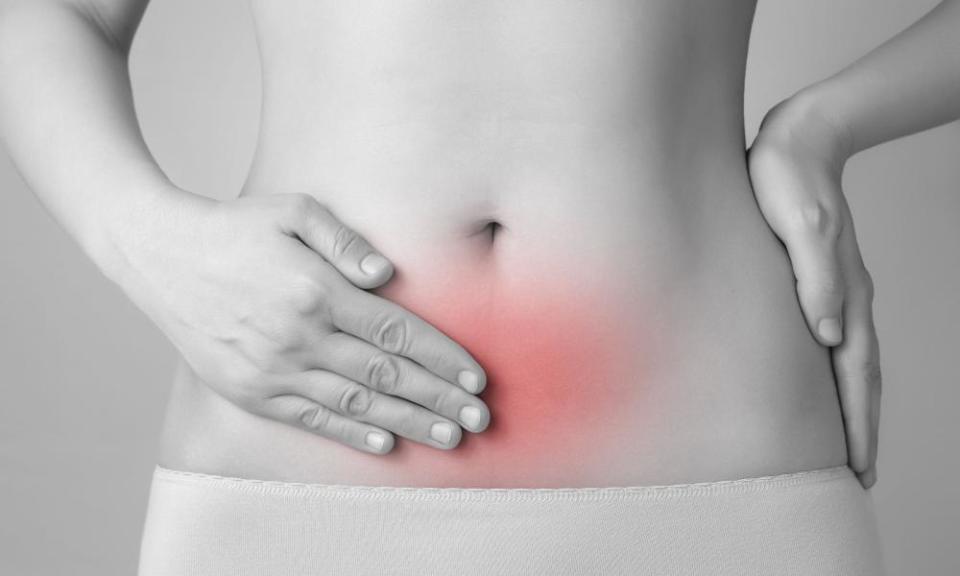Australian women with endometriosis face six-year wait for diagnosis, study finds

A study of 620 Australian women living with the painful and often debilitating condition endometriosis found women have to wait an average of 6.4 years before being diagnosed and often undergo surgeries that fail to improve their chronic pain.
The study, published in the Journal of Psychosomatic Obstetrics and Gynecology, found despite medical and surgical intervention, 65.8% of respondents suffered period pain and 82.7% experienced chronic pelvic pain in the three months prior to responding to the survey. Respondents had consulted an average of three different health practitioner specialties in the previous 12 months.
Related: The endometriosis plan is good news. If funding follows | Gabrielle Jackson
“Many women with endometriosis experienced a substantial delay in diagnosis and continue to experience ongoing symptoms, despite active management strategies being employed,” the paper concluded.
“This study provides the first internationally comparable Australian data from women with endometriosis, their disease experience and management approaches.”
The lead author of the study, Dr Beck O’Hara from Monash University’s school of public health and preventive medicine, said the delay in diagnosis occurs at two levels: patient and practitioner.
“At the patient level the delay may occur because of normalisation of period pain amongst themselves or family members, or they have difficulty distinguishing what is ‘normal’ period pain and what might require further investigation, particularly if they experienced symptoms from their first period,” she said.
“At the practitioner level they may normalise period pain, or try first-line treatments to help manage symptoms such as the pill, ruling out other conditions, or they may not be familiar with the symptoms of endometriosis.”
The survey was conducted from 14 November 2017 to 8 January 2018. In July 2018, the federal health minister, Greg Hunt, announced a national action plan to address a lack of research and treatments for the condition. Endometriosis is a chronic disease that affects one in 10 women of reproductive age globally. It occurs when tissue similar to the lining of the uterus grows outside the uterus, causing inflammation, pain, fatigue and, in some cases, infertility. It has no cure.
A gynaecologist, Dr Michael Wynn-Williams, said while there were excellent programs now being funded under the national action plan, including the free Royal Australian and New Zealand College of Obstetricians and Gynaecologists endometriosis module for health professionals, and education programs in secondary schools, more specialist services were needed.
On Monday findings were released from a UK parliamentary inquiry into endometriosis, which revealed that before getting a diagnosis, 58% of people with endometriosis had visited their GP more than 10 times. It took the 10,000 women surveyed an average of eight years to get a diagnosis. The inquiry recommended that government commit to reducing average diagnosis times, with a target of four years or less by 2025, and one year or less by 2030.
Related: Endometriosis action plan follows decades of lobbying – and suffering
Wynn-Williams said the Australian government should commit to similar targets, and specialist endometriosis centres similar to those in the UK should also be established.
“On-the-ground services in Australia are not getting funds to bring on extra surgeons or to develop centres of excellence with multidisciplinary teams,” he said. “Management and treatment is not just about surgery. We need dedicated women’s pain services that include physiotherapists and pain psychologists.
“These women are suffering for a long time and it affects all parts of their lives including their fertility, mental health, education and enjoyment of life in general.”
Wynn-Williams said approximately 1 million women across Australia and New Zealand have the condition.

